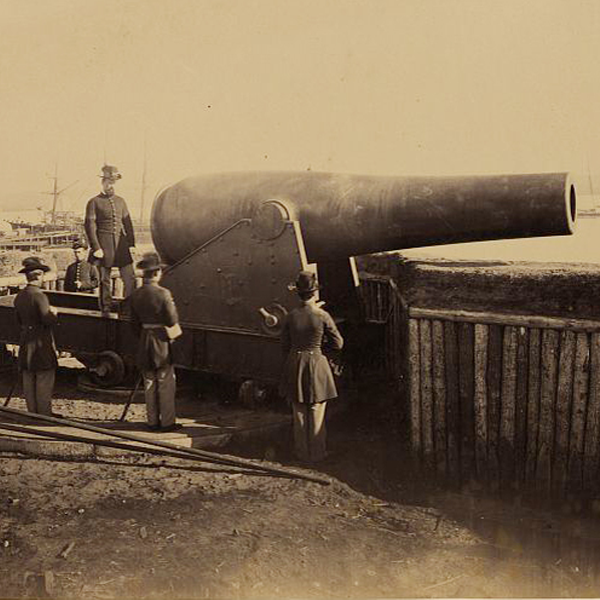Thomas Jackson Rodman & The Rodman Gun
Thomas Jackson Rodman (1816 – 1871) was born on a farm northeast of Salem Indiana. He was an American artillerist, inventor, ordnance specialist, and career United States Army officer. He served as a Union Army officer during the American Civil War, in which he was noted for his many improvements and innovations concerning the artillery used by the Union forces.
Thomas Jackson Rodman designed the largest cannon of the Civil War. It was a monstrous 20-inch caliber ship killer referred to as "the strongest cast iron cannon ever made".
General Rodman also discovered the use of shaped gunpowder grains, in which properly compressing and shaping the gunpowder into pre-designed grain shapes allowed the control of gas production by the burning gunpowder.
Once Rodman had demonstrated that the gigantic gun was a practical reality, the country seemed to lose interest. The very fact of its menacing existence apparently satisfied the President and the Ordnance Department. Further testing was not carried out until 1867. When loaded with 200-pounds of Rodman’s improved cake powder, the half-ton ball flew nearly five miles.
Though the 20-inch gun was never deployed against an enemy and the government only authorized the casting of two of the giant guns, their deterrent effect was great.
Photo - Photograph shows six Union soldiers positioning the fifteen inch Rodman gun at Battery Rodgers, Alexandria, Va., May 18, 1864. Photo: Library of Congress
Thomas Jackson Rodman designed the largest cannon of the Civil War. It was a monstrous 20-inch caliber ship killer referred to as "the strongest cast iron cannon ever made".
General Rodman also discovered the use of shaped gunpowder grains, in which properly compressing and shaping the gunpowder into pre-designed grain shapes allowed the control of gas production by the burning gunpowder.
Once Rodman had demonstrated that the gigantic gun was a practical reality, the country seemed to lose interest. The very fact of its menacing existence apparently satisfied the President and the Ordnance Department. Further testing was not carried out until 1867. When loaded with 200-pounds of Rodman’s improved cake powder, the half-ton ball flew nearly five miles.
Though the 20-inch gun was never deployed against an enemy and the government only authorized the casting of two of the giant guns, their deterrent effect was great.
Photo - Photograph shows six Union soldiers positioning the fifteen inch Rodman gun at Battery Rodgers, Alexandria, Va., May 18, 1864. Photo: Library of Congress
Listing Details
Views
4,204



